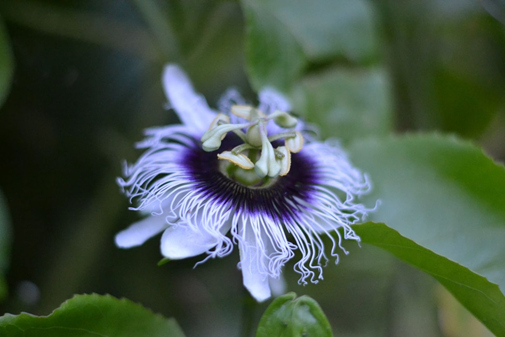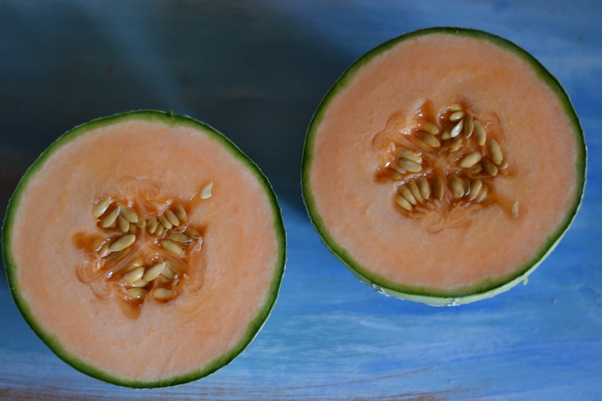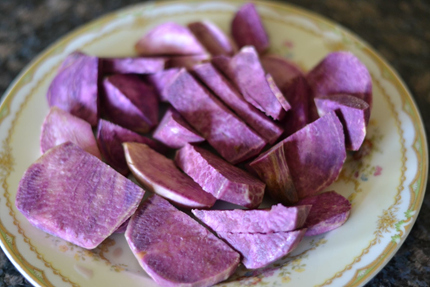
Home > Newsletters > GreenFriends Newsletters
| Home | Source Reduction | Friends of Green Friends | Newsletters |
| Gardening | Resources | What You Can Do | Embracing The Trees |
| Trench Composting |
 Lilikoi (passionfruit) flower |
|
I have a devotee friend who shares a love of gardening and I owe this article to her encouragement and inspiration. Over the years, each time I visit her we always end up in her garden, which is my favorite place to be. In fact, I love all gardens. I have helped this friend dig up and move plants around her garden, we have planted flowers to attract honeybees, harvested berries, and she has even taught me about solar cooking (cooking food in a simple, portable oven using sunlight). A few years ago this friend taught me about trench composting, where you bury organic food scraps straight into the ground. It seemed too good to be true. She said to dig a large hole in the ground (a few feet wide and deep) and bury your compost. Cover it with some soil and water the area a little bit, and in time you’ll get richer soil. It is so simple. I started doing this daily. I was unable to dig as wide and deep as she suggested but I found digging 8 to 10 inch holes was sufficient. I began doing this and burying our daily food scraps in my yard. I buried food scraps for a year. I simply covered the compost with a few inches of soil and stepped on the soil, or compacted it down with a shovel. Then I watered the area. There was no odor, no need to turn anything. You can trench compost anywhere you can dig a hole in your garden. If you trench compost near plants it will benefit those plants. As long as the buried compost is a few inches away from the plant, the plants will be fine. I dig holes wherever it is convenient to do so in my garden. I have never had problems with any animals digging up the buried organic matter. |
|
Anything Can Be Buried The rule of thumb is anything that was alive can be buried. This includes fruits, vegetables, egg shells, coffee grounds, leaves of any sort, even tea bags. I would not recommend burying meat products because it could attract animals. At the time I began trench composting, I was starting a new garden per Amma's instructions, trying to grow vegetables in my tropical climate. We planted thirteen fruit trees that year as well. I started burying my compost daily, and I did it for a couple years. In a year’s time, the entire area became covered with beautiful green vines from sweet potatoes. Now I have incredible soil in the areas where I buried food scraps. What happens underground is incredible. Microorganisms, beneficial bacteria, fungi and small creatures such as earthworms and grubs are attracted to the food scraps. They break them down into nutritious compounds that enrich the soil and whatever is planted there. |
 Papaya |
|
Buried Treasure One unexpected perk for us - many surprises have come up over the years from the buried treasures. This includes cherry tomatoes, papayas, several passionfruit vines, lime and guava trees, and different potatoes. This year we dug up loads of delicious purple potatoes. We also got a beautiful cantaloupe that started with a tender green vine that crept on the ground. |
 Our first cantaloupe |
|
In my experience when you notice plants growing from where you have trench composted it is best to leave them where they are. When I have tried to move plants they don’t thrive. If they are in bloom, they are happy there and should be left alone.
|
|
For maximum use of space, you can combine square foot gardening with vertical gardening. You can also try using pots and planters in the same way, expanding their growth upward to increase harvests. Please try trench composting. It’s super easy, fun and often magical! Theresa, Maui, HI |
| Home | Source Reduction | Friends of Green Friends | Newsletters | Resources | What You Can Do | Contact Us |
For more information, e-mail info@greenfriendsna.org |
||||||
